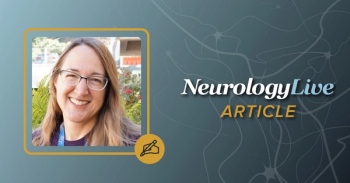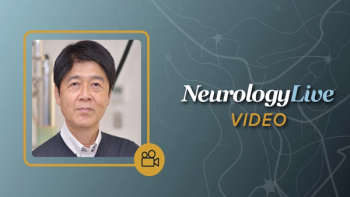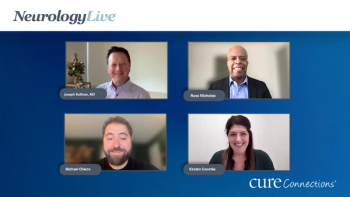
Rapid Progress in ALS: A Reflection of Advances in Neuromuscular Disorder Care

With a burst of activity in recent months, the pipeline of development for amyotrophic lateral sclerosis has proven to be a miniature likeness of the wider progress being made in the care and management of neuromuscular disorders.
The therapeutic pipeline for neuromuscular disorders currently boasts a diverse list of investigational treatments, and the development for amyotrophic lateral sclerosis (ALS) has been particularly active in recent months. This liveliness has brought about much excitement in the physician and patient communities.
It has also led into excellent timing for the advocacy community, as May is annually celebrated as ALS Awareness Month, when those communities come together with extra fervor to bring attention to the condition. As medicine has progressed in the last decade, the need to lessen the burden of the disease and a greater focus on patient quality of life has built a culture of advocacy that has seeped into clinical practice. Similarly, the desire for therapies to improve quality of life as well as disease progression has never been greater. Despite the mounting pressure, the latest research and investigations seem to indicate the field is willing to rise to the occasion.
Since the beginning of 2022 alone, a pair of therapeutic hopefuls have made their way to the FDA for review, and several others have pushed forward and published new data. The 2022 American Academy of Neurology (AAN) Annual Meeting, held in early April, also featured a number of key updates on ALS agents.
Pipeline Activity for ALS
In January, Mitsubishi Tanabe Pharma America’s oral formulation of the antioxidant therapy edaravaone was
At the time, Atsushi Fujimoto, the president of MTPA, said in a statement that the company’s "top priority is to help ensure ALS patients have flexibility with treatment and formulation options that are right for their specific needs,” and that the company was hopeful about “bring[ing] this new formulation to patients as soon as possible.”1
This news was followed in late March by a day of controversy surrounding the other hopeful, Amylyx Pharmaceuticals’ orally administered, fixed-dose coformulation of sodium phenylbutyrate and taurursodiol, AMX0035. With a PDUFA date of June 29 looming ahead, the FDA’s
A short time later in a conversation in Seattle, Washington, at the AAN’s Annual Meeting, Amylyx’s co-CEOs Justin Klee and Josh Cohen
Cohen added that there was “important scientific discussion on the statistical handling,” and that the pair “stand by all the modeling choices and assumptions.” He did acknowledge that Amylyx was “a little puzzled by the discussion on blinding, considering that in this study, there was no evidence that we know of, of unblinding. We consider the study quite well-blinded. That was surprising and a little puzzling to us as well.”
A day prior to the FDA Committee meeting on AMX0035, the pipeline took a small hit with Biogen and Ionis announcing that based on the topline results of their phase 1 study (NCT04288856) of BIIB078—previously known as IONIS-C9Rx—in individuals with C9orf72-associated ALS, the pair was
Despite this setback for the field, just days later, data on
“Additionally, it is encouraging to see the benefits of the study’s adaptive design, where this early analysis has already helped narrow the doses being explored and enabled more precise, real-time exploration of dose response and optimization,” she added.
Just days prior, at the AAN Annual Meeting, more promising news was shared as Clene Nanomedicine presented new interim data from the open-label extension of its phase 2 RESCUE-ALS trial (NCT04098406), which evaluated the investigational oral suspension of gold nanocrystals, known as CNM-AU8, in ALS. The data suggest that those treated with the therapy experienced a 70% survival benefit, with the therapy demonstrating an HR of 0.3 (P = .006, log-rank test) for those treated with the study drug when compared with the estimated mean survival from the European Network for the Cure of ALS (ENCALS) prediction model.6,7
“Following the 36 weeks of placebo versus active compound, we put everyone on the active compound, and we've been following them up. We did the census of the data in March, and it really is quite dramatic, showing that the survival in patients is improved on nanocrystalline gold, CNM-Au8. And that was the case whether the patients were on the active part in the trial, or indeed on the placebo and then switched to the active part,” study investigator
A few weeks after the AAN Annual Meeting, in early May, another potential agent moved forward in the pipeline as
Wider Progress in Care and Advocacy
In a recent conversation with NeurologyLive®, ALS expert
“Patients are always asking me how far we are away from a cure, and the analogy that I like to use is to say that basically, finding a cure in ALS is a bit like putting together an autonomously driving vehicle,” Harms explained. “You have to have all of the pieces converge and come together. Before that can happen, the software has to be up to snuff, you have to have the battery life that's going to allow them to drive, and the GPS systems all have to be up to speed. In order to allow this car to drive, a lot of complicated things have to come together. What we've been working on and laying the foundation for in ALS research over the last 20 years are all of those individual components and pieces that have to come together.”
Harms noted his excitement about the expansion in molecular tools for targeting individual genes to affect their expression, in the sequencing of genetic information, and in identifying therapeutic targets. Additionally, he said that the field has become efficient in improving clinical trial recruitment to optimize the length of trials without sacrificing outcomes data. “At the same time, that because of social media and patient organizations finding one another, the advocacy in Washington, DC, and really, across the world, for research dollars has really exploded and taken off,” Harms said.
The ongoing movement in the pipeline for ALS has generated buzz in the community, and as Harms alluded to, organizations like the
This activity has been somewhat a microcosm of the entire field, with rapid advances being made in treatments for a number of diseases. In March, at the 2022 Muscular Dystrophy Association Annual Meeting, many experts expressed experiencing challenges brought on by the speed of progress. Staying informed on the movement of potential new options in clinical trials can prove difficult as more agents enter the fold, and once treatments are FDA approved, questions abound regarding optimization and ideal patient population, followed closely by inquiries about the long-term outcomes.
The Roles of Networking and Big Data
For experts like Andrews and Harms, there are many methods of addressing the challenges brought on by rapid progress, including patient engagement and big data collection. Andrews noted that meetings that prioritize a patient presence—such as the MDA’s annual meeting—offer an excellent opportunity to engage with peers to get consensus from experience in places where the data are lacking. The positives of patient-inclusive scientific meetings have been echoed by the advocacy and patient communities.
On the physician side of things, these meetings provide a chance to “understand how [new therapies] work and who's the appropriate population, and have that discussion and doing the appropriate testing to ensure that you have enough information to make the judgment call,” Andrews said. She explained that “having that discussion openly with people, that's very important. This type of meeting helps to bring that information together, but more importantly, bring clinicians who specialize in those particular diseases together so that they can share their experiences.”
On the other hand, the so-called big data revolution in medicine has led to the development of several large databases to store collective information to help inform clinical decision-making and record important patient information. Many have sprung up in the last decade, offering clinicians specializing in an assortment of disease states, including ALS, more patient-level data than ever.
One such database is the MDA’s MOVR data hub, a national patient data hub for neuromuscular diseases that collects clinical data and genetic diagnostic information from individuals seen at MDA Care Centers.9 Elisabeth Kilroy, PhD, who is the director of MOVR, spoke with NeurologyLive® about the importance of these big-data efforts for the neuromuscular field, and shared the MDA's goals for the platform, noting that the focus is for the database to be a source of real-world data for preapproval studies or regulatory submission, as well as postapproval follow-on studies.
"We have really spent a lot of time going through the draft guidances that were released by the FDA around their real-world evidence program, and understanding how MOVR currently lines up—whether it's the platform we capture data on, our data curation process, our data auditing, our source document verification. Really trying to understand whether our data is going to be allowed to be used is important," Kilroy said. "We see it as a great space to collect natural history studies, but also serve as an external comparator arm for clinical trial feasibility."
Kilroy added that as of now, the platform collects not only medication data, but clinical trial participation data, which allows for following of participants as their disease progresses, and, hopefully, will then help inform the clinical community on how therapies are affecting that progression. "Our number one goal this year is to grow our encounter data—that's our longitudinal data set that would really serve as real-world evidence and real-world data—and then also alleviate the burdens of data entry. We're trying to work on how to integrate the electronic health record, how to really do more of a batch upload. We know, it's hard. Everyone is swamped. No one has the bandwidth to do it all. But we're really focused on those two things," Kilroy said.
Harms, who himself helps to run an ALS database at the Columbia University Motor Neuron Center, pointed to the importance of these types of collection efforts and the role they can play in pushing the field forward. MOVR, he noted, already has data on more than 2000 prospectively followed patients with ALS.
“I think that's where big science in ALS has recognized a need, is the prospective collection of longitudinal clinical information to be paired with biofluids that can be studied for biomarkers, and then genetic information that can be studied for genetic implication,” Harms said. “You can go back and forth with questions like, does this gene increase the likelihood of a good prognosis or a bad prognosis? Does this genetic mutation increase the likelihood that you'll have dementia associated with your ALS, or bulbar onset of your ALS? We're going to learn a lot from studying these databases.”
In thinking of this data collection, Harms additionally voiced his enthusiasm for the variety in the databases that are working to achieve this task, explaining that the differences between them offer strengths for potentially identifying things that other hubs may miss. “It's good for us to have multiple databases approaching this from different directions, and so we can then use those big data tools—the AI and other machine learning algorithms—to be able to bring those together to learn more from the increased numbers across these different studies,” Harms said.
REFERENCES
1. Mitsubishi Tanabe Pharma America announces FDA acceptance of new drug application (NDA) for oral edaravone formulation for the treatment of ALS. News release. Mitsubishi Tanabe Pharma America, Inc. January 12, 2022. Accessed May 10, 2022. https://www.prnewswire.com/news-releases/mitsubishi-tanabe-pharma-america-announces-fda-acceptance-of-new-drug-application-nda-for-oral-edaravone-formulation-for-the-treatment-of-als-301459460.html
2. FDA. Peripheral and Central Nervous System Drugs Advisory Committee Meeting. March 30, 2022. Accessed May 10, 2022. https://www.fda.gov/advisory-committees/peripheral-and-central-nervous-system-drugs-advisory-committee/updated-meeting-time-and-open-public-hearing-time-march-30-2022-meeting-peripheral-and-central
3. Amylyx Pharmacueticals announces oral presentation of safety and tolerability data on AMX0035 from clinical trials at 2022 American Academy of Neurology Annual Meeting. News release. Amylyx Pharmaceuticals. April 2, 2022. Accessed May 10, 2022. https://www.amylyx.com/media/amylyx-pharmaceuticals-announces-oral-presentation-of-safety-and-tolerability-data-on-amx0035-from-clinical-trials-at-2022-american-academy-of-neurology-annual-meeting
4. Biogen and Ionis Announce Topline Phase 1 Study Results of Investigational Drug in C9orf72 Amyotrophic Lateral Sclerosis. News release. March 28, 2022. Accessed May 10, 2022. https://www.biospace.com/article/releases/biogen-and-ionis-announce-topline-phase-1-study-results-of-investigational-drug-in-c9orf72-amyotrophic-lateral-sclerosis/
5. Wave Life Sciences announces positive update to ongoing phase 1b/2a FOCUS-C9 study driven by potent, durable reductions of poly(GP) with low, single doses of WVE-004. News release. Wave Life Sciences. April 4, 2022. Accessed May 10, 2022. https://www.biospace.com/article/releases/wave-life-sciences-announces-positive-update-to-ongoing-phase-1b-2a-focus-c9-study-driven-by-potent-durable-reductions-of-poly-gp-with-low-single-doses-of-wve-004/
6. Updated Interim Data from Clene Nanomedicine’s RESCUE-ALS Open-Label Extension Study to be Presented in Emerging Science Program at 2022 AAN Annual Meeting. News release. Clene Nanomedicine. April 1, 2022. Accessed May 10, 2022. https://www.globenewswire.com/news-release/2022/04/01/2414686/0/en/Updated-Interim-Data-from-Clene-Nanomedicine-s-RESCUE-ALS-Open-Label-Extension-Study-to-be-Presented-in-Emerging-Science-Program-at-2022-AAN-Annual-Meeting.html
7. Kiernan MC. Long-Term Survival of Randomized Participants Enrolled in the Phase 2 RESCUE-ALS Trial of CNM-Au8, A Cellular Energetic Catalyst. Presented at: AAN Annual Meeting; April 2-7, 2022; Abstract 007.
8. Denali Therapeutics Announces Achievement of RIPK1 Milestone for Phase 2 Clinical Trial Initiation in ALS by Sanofi. News release. Denali Therapeutics. May 2, 2022. Accessed May 10, 2022. https://www.globenewswire.com/news-release/2022/05/02/2433539/0/en/Denali-Therapeutics-Announces-Achievement-of-RIPK1-Milestone-for-Phase-2-Clinical-Trial-Initiation-in-ALS-by-Sanofi.html
9. MOVR Data Hub (neuroMuscular ObserVational Research). MDA website. Accessed May 10, 2022. https://www.mda.org/science/movr-data-hub-neuromuscular-observational-research
Newsletter
Keep your finger on the pulse of neurology—subscribe to NeurologyLive for expert interviews, new data, and breakthrough treatment updates.


























